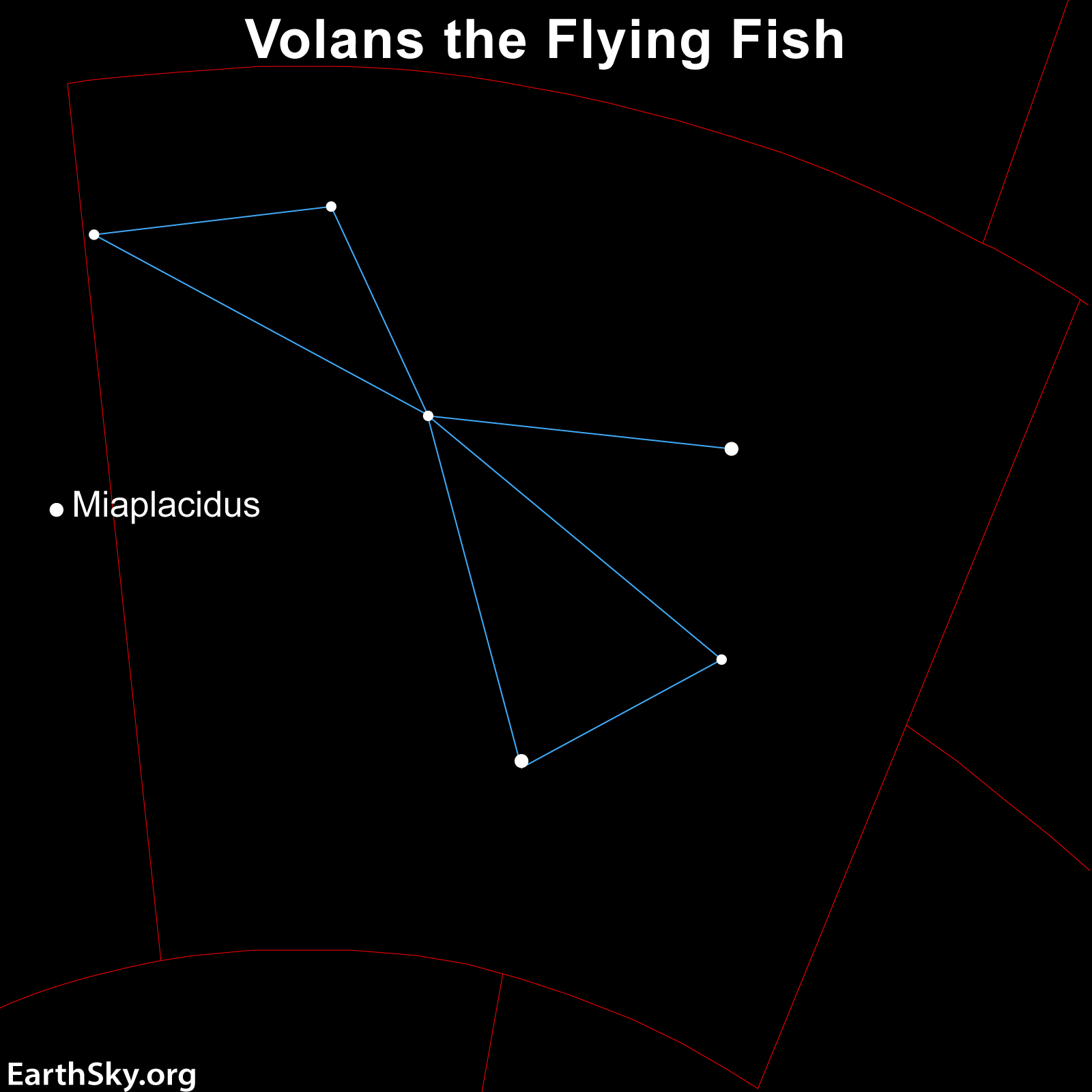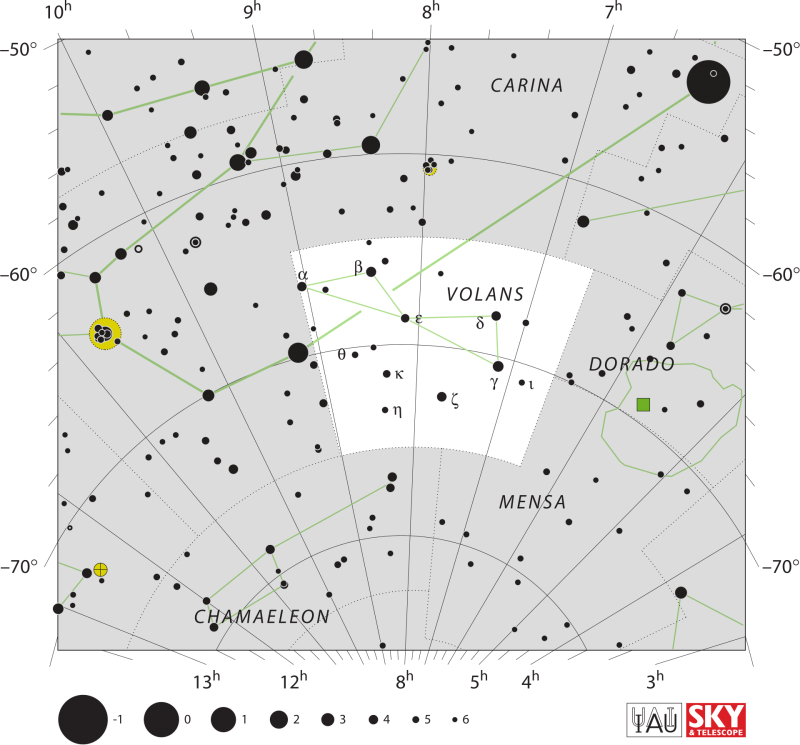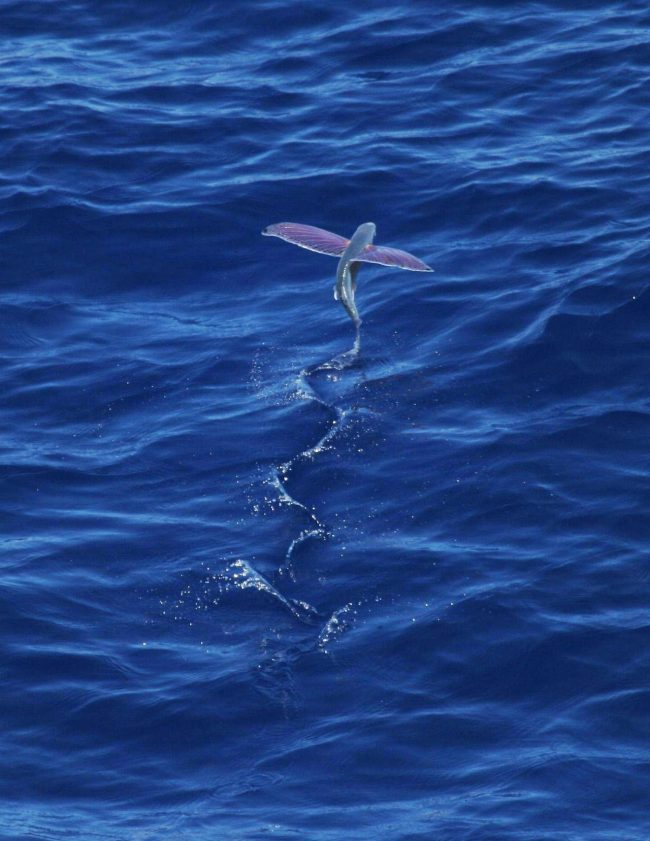
Volans the Flying Fish is a constellation in Southern Hemisphere skies that you can best view in March. Appropriately, the Flying Fish appears to cross from the water over part of a ship’s keel, also known as the constellation Carina. Once there was a mighty ship of stars – called Argo Navis – that sailed southern skies. The International Astronomical Union officially divided the great ship Argo into pieces (Carina the Keel, Puppis the Poop Deck or Stern, Vela the Sails) in 1930.
The Flying Fish Volans swims in the sky aside this celestial ship. The German astronomer and celestial mapmaker Johann Bayer created it in 1603. The constellation was once called Piscis Volans, the Flying Fish. Later, it was shortened simply to Volans.
And, if you ever see it, you’ll find that Volans has a handful of stars resembling the wings of a flying fish. The website ConstellationsofWords.com points out:
Volans, a fish flying, evokes the idea of a thing in a foreign environment. ‘A fish out of water’ is a metaphor for something being out of its element. It is a stranger, exile, foreign.
And a celestial flying fish is even more so!
See Volans the Flying Fish
Carina is your key to seeing Volans, if you ever find yourself standing under Southern Hemisphere skies. The constellation Carina has two fairly bright stars to help you out, and Volans is between them.
The first is Alpha Carinae, or Canopus, the 2nd-brightest star in the night sky after Sirius. Canopus shines at magnitude -0.6 and is nearly overhead on March and early April evenings. You can’t miss it!
The other helper star for finding Volans is Beta Carinae, also known by the proper name Miaplacidus. It lies to the southeast of Canopus and is moderately bright at magnitude +1.6.
Just a short jump away from Miaplacidus, back in the direction of Canopus, you’ll find Volans.

The stars of Volans
The brightest star in Volans is Beta Volantis at magnitude 3.76. It lies 108 light-years away. Next is Gamma 2 Volantis, shining at magnitude 3.75 from a distance of 137 light-years. (Gamma 1 Volantis is 14 arcseconds away from Gamma 2 but only magnitude 5.5. It lies 132 light-years away.)
The third brightest star in Volans is Zeta Volantis. Zeta Volantis shines at magnitude 3.93 at a distance of 132 light-years. Delta Volantis is fourth brightest, shining at magnitude 3.97 from a hefty 671 light-years away. The fifth brightest star of these similarly bright stars received the Alpha label – Alpha Volantis – at magnitude 3.99. It lies 124 light-years away. Volans’ sixth brightest star and the last one of note is closest to the center of the constellation, Epsilon Volantis. Epsilon is magnitude 4.34 and lies 642 light-years away.

Galaxies in Volans
The Milky Way runs through one half of Volans, but the other half allows for a view out into the deeper universe. This is where observers can find two galaxies visible through larger telescopes, NGC 2434 and NGC 2442.
NGC 2434 is magnitude 11.2 with a bright central core. The other galaxy, NGC 2442 at magnitude 11.0, is technically two galaxies colliding. NGC 2442 goes by the nickname of the Meathook Galaxy. Read more about the Meathook Galaxy here, and enjoy a video from the European Southern Observatory zooming into this Southern Hemisphere wonder below.
Bottom line: Volans the Flying Fish is a constellation in the Southern Hemisphere that appropriately lies next to Carina the Keel. You can spot the Flying Fish on March nights.











